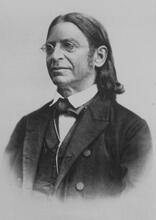Nahat Ruah Le-Nashim (Women's Spiritual Satisfaction)
Nahat Ruah Le-Nashim forms the legal basis for granting women the option to perform commandments from which they are exempt, thereby bringing them spiritual satisfaction. The Talmud discusses the precedent of women’s participation in the Temple, in the commandment of semikhah (Leviticus, 1:2–4), to lay one’s hands on the sacrifice in order to attain atonement, and its subsequent broad application to other commandments. This powerful meta-halakhic concept overrides both biblical and rabbinic prohibitions in order to permit women’s participation. Although women are exempt from certain commandments, the legal tradition values their spiritual experience of these rituals.
Article
Jewish law presents this concept as the legal basis for granting women the option to perform commandments from which they are exempt, thereby bringing them spiritual satisfaction. The original source, found in the A type of non-halakhic literary activitiy of the Rabbis for interpreting non-legal material according to special principles of interpretation (hermeneutical rules).midrash The legal corpus of Jewish laws and observances as prescribed in the Torah and interpreted by rabbinic authorities, beginning with those of the Mishnah and Talmud.halakhah (Sifra Vayikra, Dibura de-Nedava 2:2), is quoted in the The discussions and elaborations by the amora'im of Babylon on the Mishnah between early 3rd and late 5th c. C.E.; it is the foundation of Jewish Law and has halakhic supremacy over the Jerusalem Talmud.Babylonian Talmud (BT Hagigah 16b, see also BT The Jewish New Year, held on the first and second days of the Hebrew month of Tishrei. Referred to alternatively as the "Day of Judgement" and the "Day of Blowing" (of the shofar).Rosh ha-Shanah 33a and BT Eruvin 96a-b): “The daughters of Israel may perform the laying of hands on a voluntary basis. Said R. Yose: Abba Eleazar told me: Once we had a calf designated as a peace-sacrifice, and we brought it to the Women’s Court and the women performed laying of hands on it. Not that the women were obligated to do so, but in order to give them nahat ruah—spiritual satisfaction.”
The Lit. "teaching," "study," or "learning." A compilation of the commentary and discussions of the amora'im on the Mishnah. When not specified, "Talmud" refers to the Babylonian Talmud.Talmud discusses the precedent of women’s participation in the Temple, in the commandment of Rabbinic ordinationsemikhah (Leviticus, 1:2-4), to lay one’s hands on the sacrifice in order to attain atonement, and its subsequent broad application to other commandments. This powerful meta- The legal corpus of Jewish laws and observances as prescribed in the Torah and interpreted by rabbinic authorities, beginning with those of the Mishnah and Talmud.halakhic concept overrides both biblical and rabbinic prohibitions in order to permit women’s participation in these rituals. On a large scale, the Sages disregarded the biblical prohibition of bal tosif (Deuteronomy 4:2, 13:1), adding to the commandments prescribed by God, in order to satisfy women’s desire for participation.
On a smaller scale, in some specific commandments the concept of nahat ruah overruled relevant prohibitions. Women performed semikhah despite the appearance of transgressing the biblical prohibition of me’ilah (Leviticus 5:15–16), misusing God’s consecrated property. Women and men may carry and blow the Ram's horn blown during the month before and the two days of Rosh Ha-Shanah, and at the conclusion of Yom Kippur. shofar for women despite both the biblical prohibition of carrying from one domain to another objects that are not needed for the commandments of the day, and the Rabbinic prohibition of blowing a musical instrument on the holiday. Based on the concept of nahat ruah, Ashkenazi authorities permit women to say blessings on these voluntary commandments despite the biblical prohibition of taking God’s name in vain (Exodus 20:7). Although women are exempted from certain commandments, the legal tradition values their spiritual experience of these rituals.
Iggerot Moshe, Orah Hayyim 3:94, Terumat Ha-Deshen 2:132
Ran Rosh Ha-Shanah (9b Rif)
Rosh Rosh Ha-Shanah 3:7
Rashi, Tosefot: Ha-R. Yehuda and Rashba on BT Rosh Ha-Shanah 33a
Responsa Poskei Uziel She’elot ha-Zeman #44
Responsa Ziz Eliezer 14:53.
Shulhan Arukh Ha-Rav: Rosh Ha-Shanah 589:2
Sha’agat Aryeh Responsum #106
Tosafot: La’asot Nahat Ruah Le-Nashim on BT Hagiga 16b








